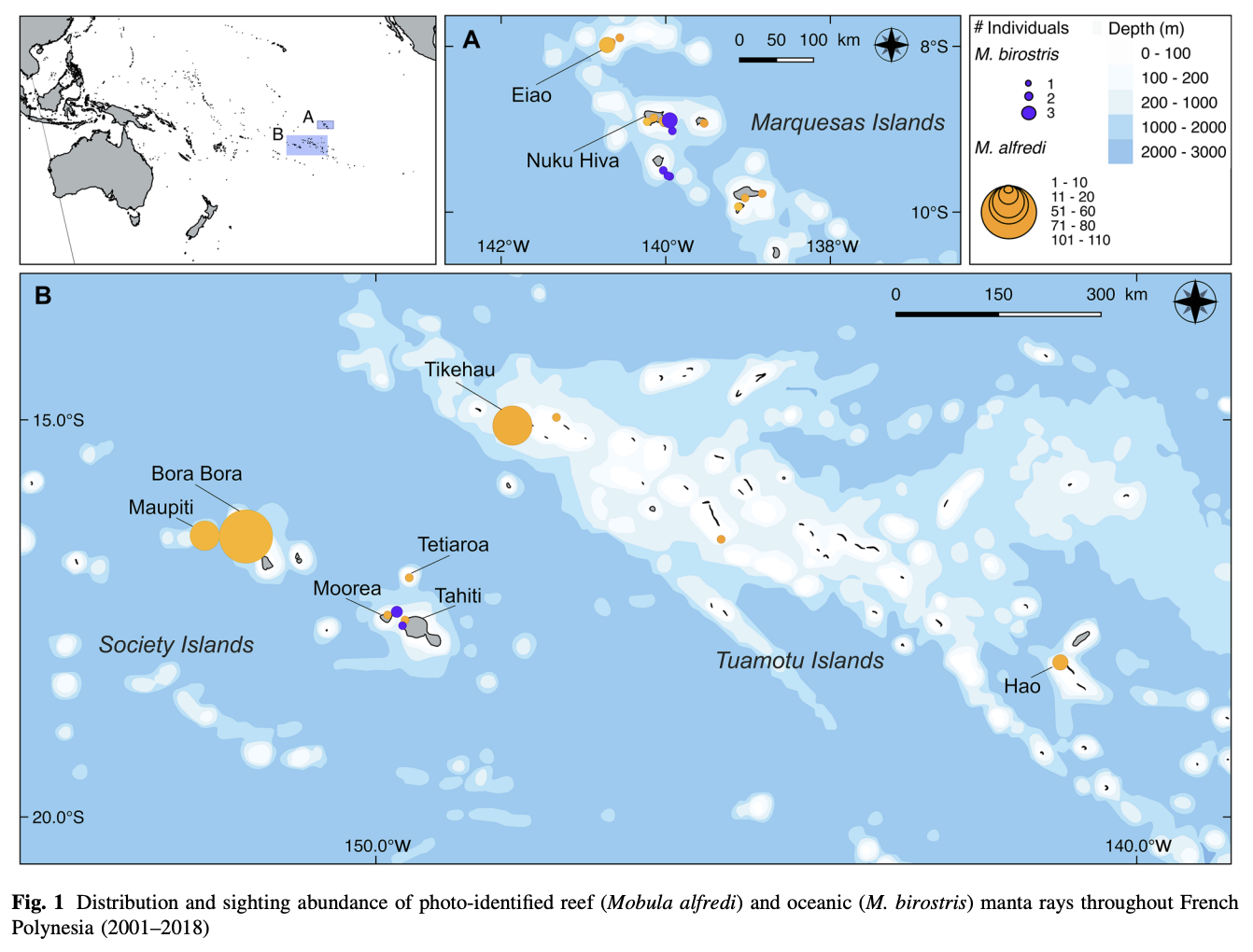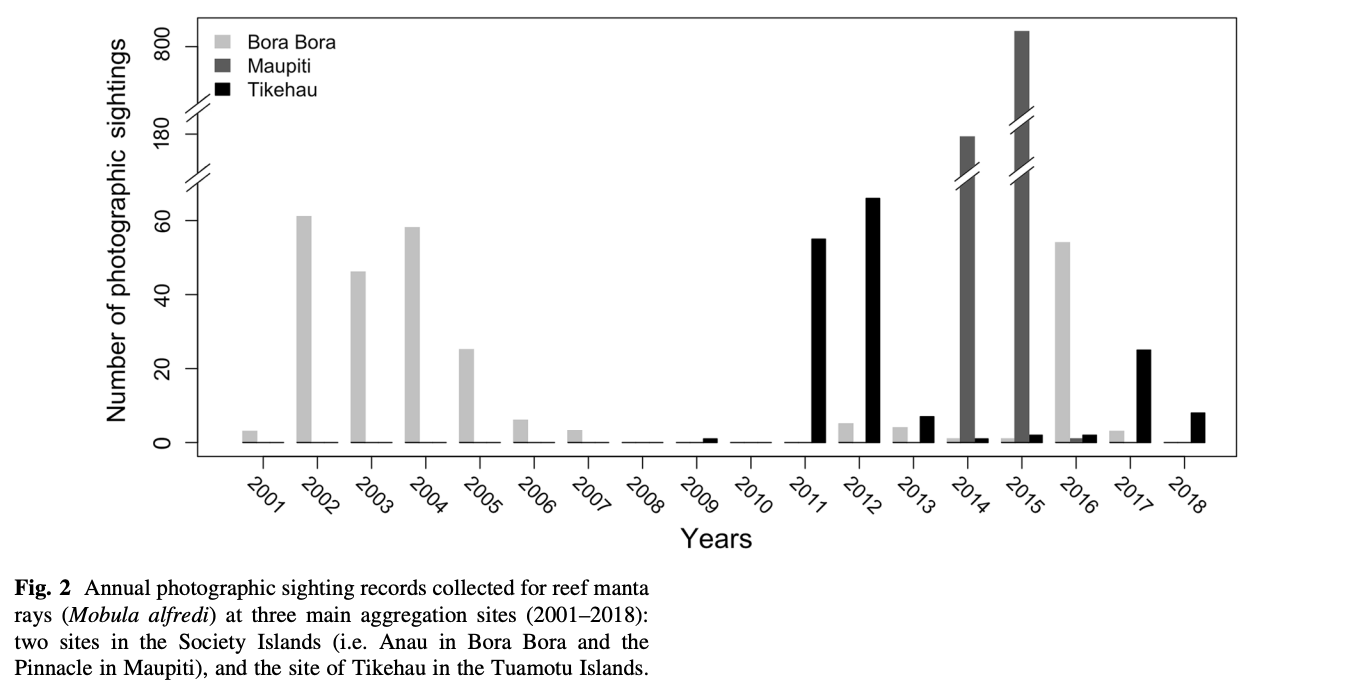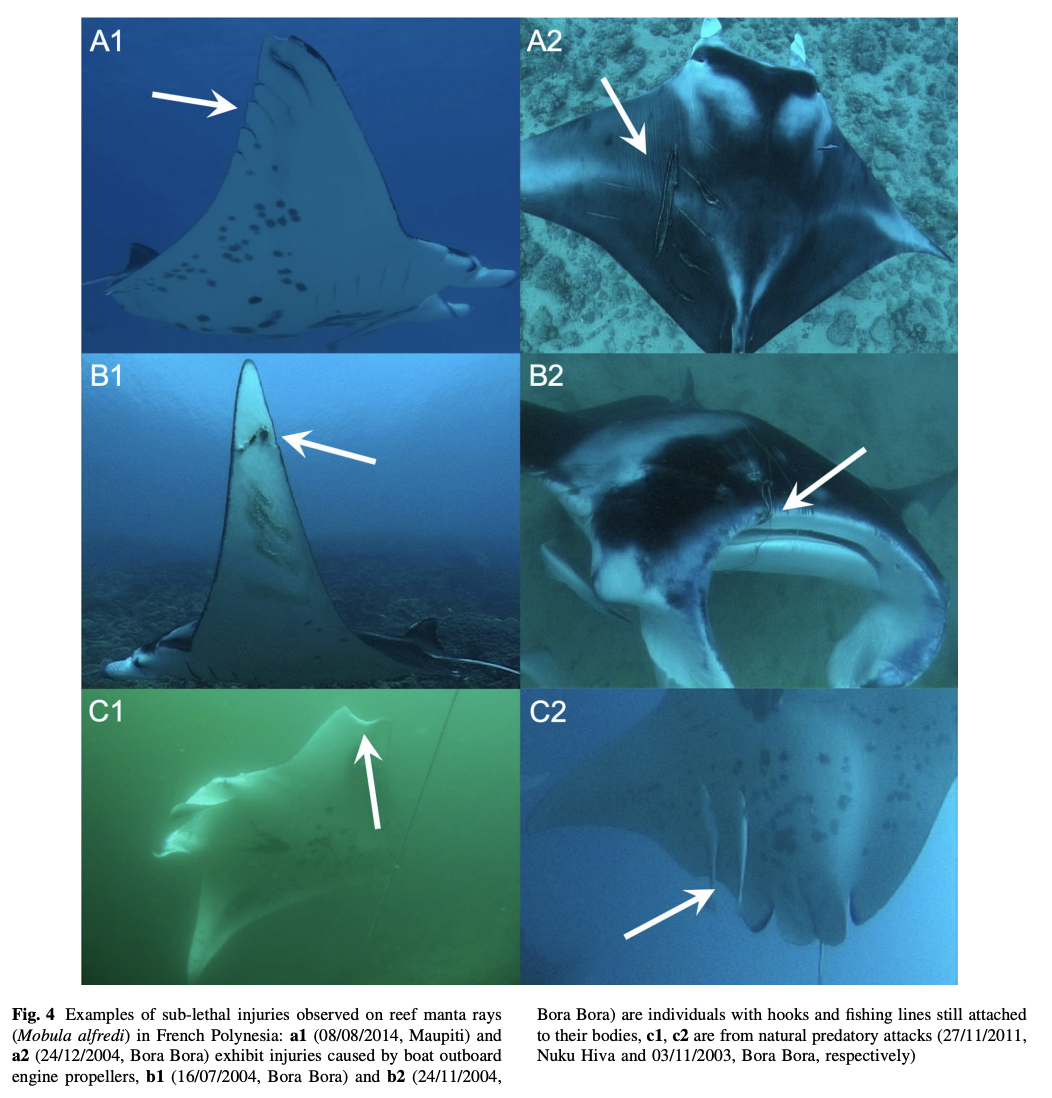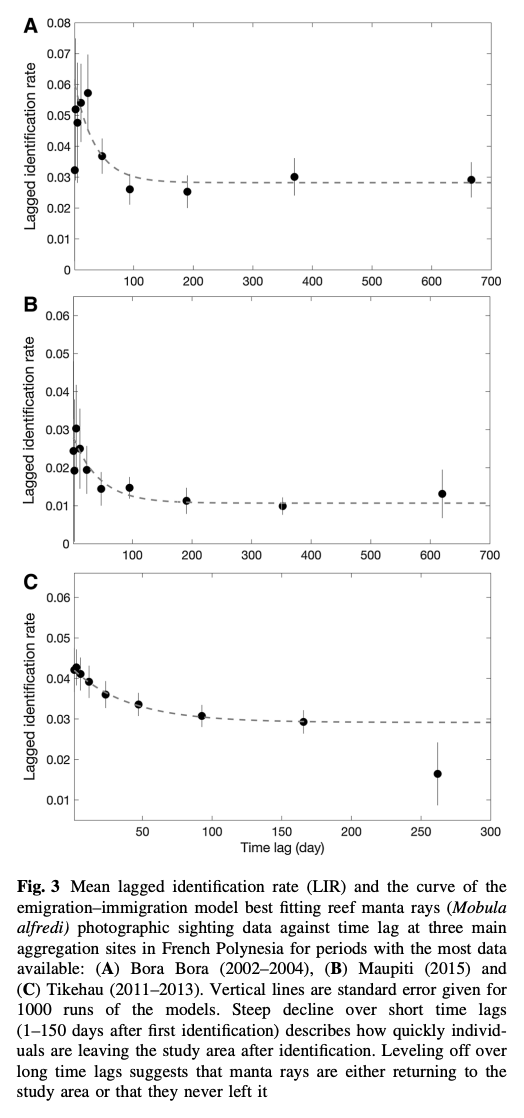Preliminary insights into the population characteristics and distribution of reef (Mobula alfredi) and oceanic (M. birostris) manta rays in French Polynesia
September 2019
Alice S. Carpentier, Ce´cile Berthe, Isabel Ender, Fabrice R. A. Jaine, Johann Mourier, Guy Stevens, Moeava De Rosemont & Eric Clua
Keywords: Site fidelity • Citizen Science • Sympatry • Spatial Connectivity • Ecotourism Management



Summary: This study provides insights into the population characteristics and regional distribution of reef manta rays (Mobula alfredi) and oceanic manta rays (M. birostris) in French Polynesia. Using an 18-year dataset of sighting records, researchers identified 317 individual M. alfredi and 10 M. birostris across different islands. The study confirms the sympatric distribution of both species in the Society Islands and reveals long-term site fidelity and some connectivity between populations. It also highlights the prevalence of sub-lethal injuries in M. alfredi, mostly caused by boat propeller strikes and fishing gear entanglements, emphasising the need for further research on population structure and threats.
Abstract
In French Polynesia, both currently recognized manta ray species, Mobula alfredi and M. birostris, are observed. Despite being an important cultural asset and generating significant economic benefits through manta ray watching tourism, published data on the ecology and threats to these species in the region are scarce. Based on an 18-year dataset of sighting records collected by citizen scientists and during two scientific expeditions, this study provides the first insights into the population characteristics and regional distribution of the two manta ray species in French Polynesia. A total of 1347 manta ray photographs (1337 for M. alfredi and 10 for M. birostris) were examined for the period January 2001–December 2017, with photo-identification techniques leading to the successful identification of 317 individual M. alfredi and 10 individual M. birostris throughout the Society, Tuamotu and Marquesas Islands. We provide the first confirmation of sympatric distribution of both species in the Society Islands. Our results highlight strong and long-term site fidelity of M. alfredi individuals to certain aggregation sites (> 9 years for 16 individuals) and reveal some degree of connectivity between populations, with 10 individuals recorded moving between islands located up to 50 km apart. Analysis of photographs of individuals bearing sub-lethal injuries (n = 68) suggests that M. alfredi are more likely to be injured at inhabited islands (Maupiti or Bora Bora; 75% of all injured individuals) than at uninhabited islands, with 75% of injuries related to boat propeller strikes and fishing gear entanglements. Our findings emphasize the need for further research to allow for a comprehensive evaluation of population structure, size and threats to manta rays in this region.
Author Affiliations
PSL Université Paris
Laboratoire d’Excellence ‘‘CORAIL’’
Observatoire des Requins de Polynésie
The Manta Trust
James Cook University
Sydney Institute of Marine Science
Department of Biological Sciences, Macquarie University
UMR MARBEC (IRD, Ifremer, Univ. Montpellier, CNRS)
Association Manta Polynesia
Funded by
Topdive Bora Bora
Le Méridien Bora Bora
Direction of the Environment of French Polynesia
Conrad Bora Bora Nui
Robert and Lisa Wheatley
Lindblad Expedition


